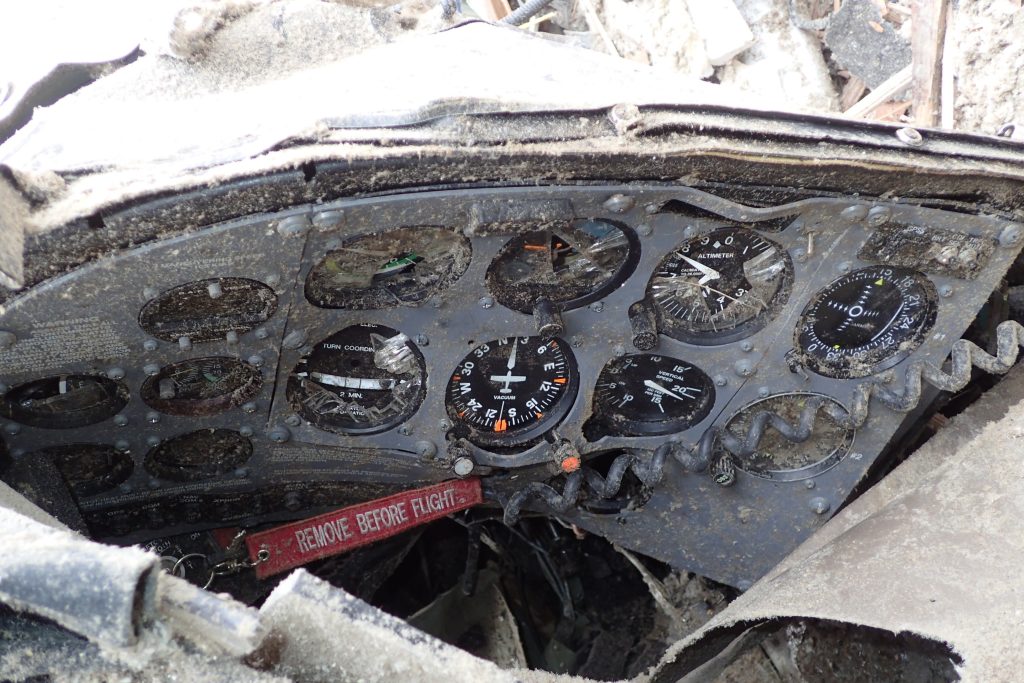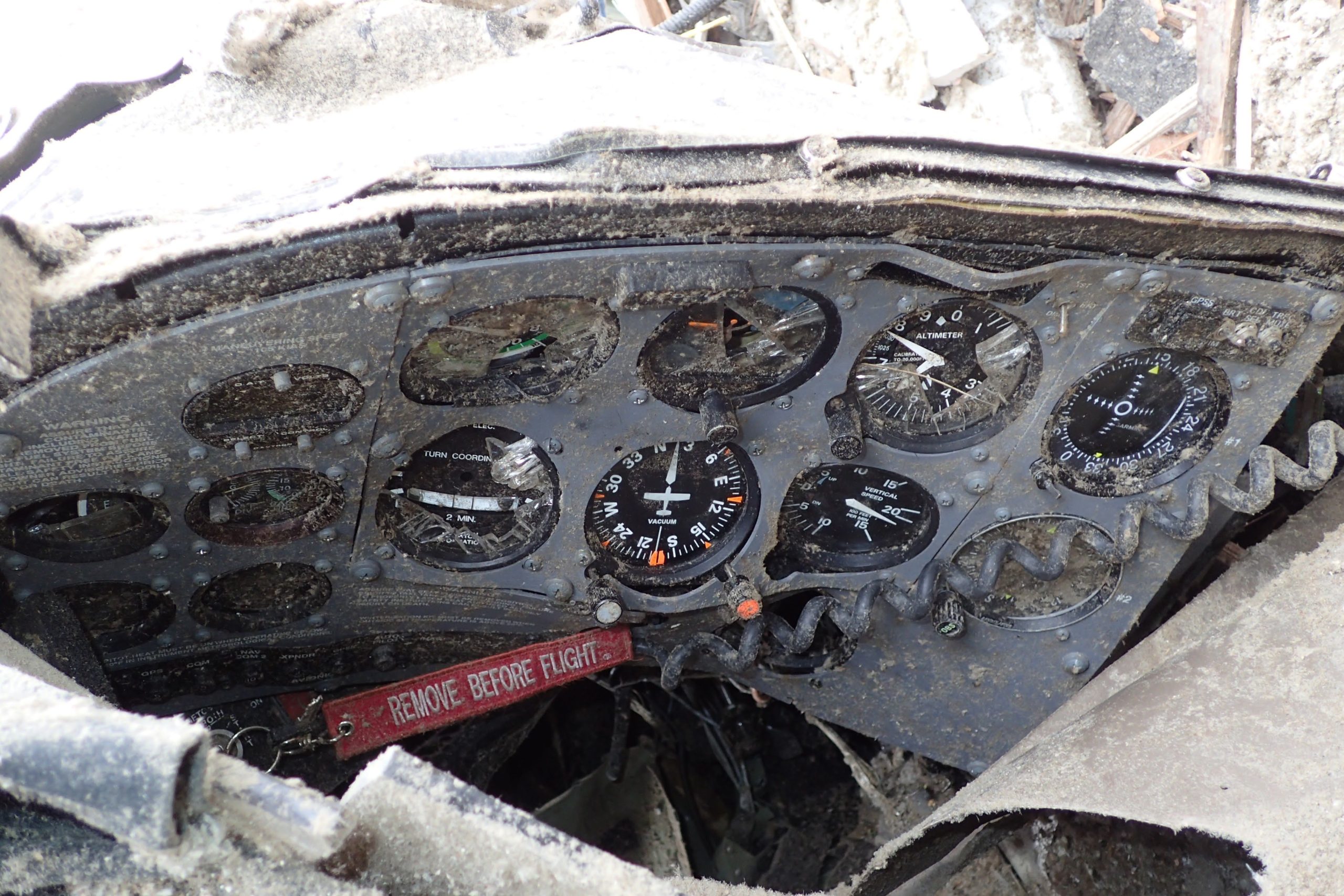Pilots die from the same things over and over and over again.

For a more pilot-oriented account of this accident see this Pilot Debrief episode on YouTube. It was produced after I wrote this text.
I completed a flight review on October 1st, 2022, which is something the FAA requires pilots to do every two years. It involves meeting with an instructor to discuss flying and demonstrate maneuvers for a couple hours. It’s an attempt to identify and correct weaknesses that have crept into your thought processes and aircraft handling abilities over time.
For the past two years my mind has periodically returned to that day. Not to the flight review, it was unremarkable, but to something unrelated that happened later that day in my old neighborhood: three people were killed when a Cessna 172 crashed shortly after takeoff from Duluth International Airport at night in less than ideal weather conditions.
What probably happened was apparent from the start. The flight departed into low clouds and turbulence at night, made a couple meandering turns, then crashed into power lines and a house in a rapid, turning descent. These are the telltale signs of loss of control due to spatial disorientation.
I was curious about a couple aspects of the flight so I checked the status of the NTSB investigation every few months for two years. The final report was finally issued a couple weeks ago. The probable cause is not a surprise:
The National Transportation Safety Board determines the probable cause(s) of this accident to be:
The pilot’s loss of airplane control due to spatial disorientation during initial climb in dark night and low instrument meteorological conditions, which resulted in a descent into terrain. Contributing to the accident was the pilot’s fatigue due to a long day of flying and personal activities.
It was likely pure pilot error, both in judgement and in execution.
Repeating ourselves
Pilots tend to kill themselves and their passengers in the same small number of ways over and over again. Flying into storms. Getting too slow and stalling while maneuvering near an airport. Or, as happened here, flying into low- to no-visibility conditions while being unprepared to do so and losing control of the aircraft.
We are warned repeatedly of the importance of maintaining proficiency, establishing limits for ourselves, and not conducting flights that might push us to the ragged edges of our abilities. But we are prone to disregard all of that under pressure, as this pilot did. He knew he was not prepared for the flight but he took it anyway.
The [pilot] expressed … that he was a little nervous about the next mornings flight in [instrument] conditions. He … did not feel confident in his instrument abilities
His gut told him not to go but he didn’t listen to it.
Instrument abilities
The human balance system can only reliably sense accelerations, not steady-state motion, and the forces we feel from gravity and inertia are indiscernible from one another, so our brain needs a visual reference to remain calibrated to which way is up and which way is down. If we lose this calibration we cannot control an airplane for any significant period of time.
In visual flight, the calibrating reference is the beautiful world around us: the green Earth and the blue sky and their convergence at the horizon we see through the window in front of us. In instrument flight, inside clouds, it’s the dials on the dashboard because none of that other stuff is visible.
The accident flight was an instrument flight. Clouds started about two hundred feet above the ground and may have continued past the highest altitude at which the aircraft was capable of flying. They were going to be inside of clouds from a few seconds after takeoff until, possibly, a minute or two before landing. The pilot needed to be prepared for that.
Conducting a flight like this requires additional training beyond what is required to become a basic visual-only pilot. It’s not a dangerous thing if you’re trained and certified and proficient in doing it. The pilot was so trained and certified–and was a flight instructor to boot. Unfortunately, he seems not to have been proficient. He had little real world experience and none of his experience was recent. His skills had probably eroded to some degree.
Skill erosion
In my limited experience, there are a few aspects of instrument flight that don’t stay with you unless you practice them continuously. You don’t really lose the ability to read the individual dials or to correct the little upsets and oscillations in roll, pitch, and yaw that happen throughout a flight. You don’t lose your ability to go up and down and left and right. What you do lose is your ability to assemble and maintain a mental picture, verify its correctness, predict and prepare for what comes next, and act smoothly and correctly in light of the little upsets and distractions and problems that inevitably occur.
You also lose capacity to ignore the vestibular illusions your brain throws at you when it loses its sense of physical orientation. It may tell you you’re sideways and diving when you’re in normal, level flight. It may tell you you’re climbing when you’re descending. It may simply make you feel physically ill. You have to ignore all of this, which requires more conscious effort the longer it has been since you last experienced it.
At least that’s how it is for me.
Distraction
The proximate cause of this accident was loss of aircraft control. Loss of aircraft control, absent some type of equipment failure, tends to be triggered by distraction. There was no equipment failure here.
I wasn’t in the airplane, nor was the NTSB, so nobody can say for sure what distractions may have been present. I can make an educated guess, however, in the interest of identifying any possible distractions and finding ways to avoid those distractions myself.
The Duluth ground controller gave the following instruction to the pilot:
Cessna two tango alpha cleared to the South Saint Paul airport via direct climb and maintain six thousand departure frequency one two five point four five squawk four two two zero
The flight is to follow a direct line between the Duluth airport and St. Paul Fleming airport, its destination. It is to do so at 6,000 feet above sea level, about 4,500 feet above the ground in Duluth, and it will be asked to switch its radio to frequency 125.45 for radar service after takeoff. It is to “squawk” (set into its transponder) code 4220 to identify it on radar along the route.
The pilot responded:
alright cleared to the South Saint Paul air po – airport via direct climb and maintain six thousand one two five four two five and i missed the squawk code
There is a problem here. Actually, there are two problems here. How important they are in the accident chain is unknown. My gut says one of them–a simple, honest, everyday mistake–may have been a critical link.
The ground controller responded:
two tango alpha four two two zero forty two twenty for the squawk readback is correct and advise ready to taxi
There is another problem here. The ground controller repeated the transponder code as requested: 4220. He did not, however, catch the incorrect readback of the frequency as 125.425 rather than 125.45. He states “readback is correct,” though that part of the readback is not correct.
The incorrect frequency is a minor detail that potentially sets the stage for a significant distraction shortly after takeoff. If the pilot presets that frequency into his radio, as one would typically do, then when he is asked to switch, shortly after takeoff and close to the ground, he is either going to switch to the wrong frequency and have nobody to talk to, or he is going to recognize the mistake and possibly start poking around in an attempt to re-enter the correct frequency. Either could be quite distracting.
The entire potential issue is easily avoidable, too: these frequencies are known and published and available from multiple sources, at least two of which would have been available to the pilot in the plane. The fact that air traffic control reads the frequency to you over the radio is really just a courtesy. You should already know it.
Continuing along, the ground controller offers the pilot some weather details and eventually clears him for takeoff. The aircraft takes off, begins a right turn at what I’d consider an inappropriately low altitude, then disappears into the clouds. The ground controller instructs the pilot to switch frequencies and contact the radar controller.
The radar controller never hears from the pilot. He watches the aircraft, attempts to establish communication with it, as it levels off, begins a series of errant turns, then descends until it disappears. As it disappears the electricity in the control tower briefly flicks off and then back on again. Momentary confusion ensues over the power outage. The controllers realize the aircraft may have crashed and contact airport rescue.
The rest is a recovery mission.
Aviate, navigate, communicate
One of the mantras that is drilled into pilots from the earliest days of their training is “aviate, navigate, communicate.” These are a pilot’s priorities, in strict order. First you aviate: control the airplane. Second you navigate: point the airplane in the direction you want it to go. Third you communicate: coordinate with air traffic control or other aircraft or whomever else as appropriate.
In no case do you allow a lower priority to interfere with a higher priority.
I’ve long had a feeling that the lowest priority crept up and interfered with the highest priority that night and three people lost their lives because of it. Entering an incorrect radio frequency never killed anybody, but entering an incorrect radio frequency and becoming distracted while trying to fix it, close to the ground, could absolutely kill somebody. Smaller distractions (for example, burned-out lightbulbs) have killed people.
The aircraft had a GTN 750 touchscreen radio. The typical way of changing frequencies on these is by tapping the digits of the frequency onto the screen one by one. This can be difficult in turbulence, and each mistake you make requires two additional taps to correct. Or you might start the whole process over to correct it.
If this is was a source of distraction–and this is all speculation, we cannot know–the correct action would have been to delay the frequency switch. Continue talking to the ground controller (in Duluth the controllers sit next to each other in the same room anyway.) Or talk to nobody for a while. Climb. Turn on course, reach a steady state. Aviate. Then fix the radio and contact the radar controller. He might be miffed that it took you so long to contact him but you can’t be concerned about that.
On a hunch I dug around and found that the weather broadcast frequency at St. Paul Fleming Field, the pilot’s home airport, is 119.425. He would have entered the digits 4-2-5 into that radio dozens, maybe hundreds of times. At the end of a long day, patterning may have nudged him toward errantly interpreting “4-5” as “4-2-5.” These things happen.
One more time: we will never know.
My takeaways
Regardless of what actually happened here, I’ve added a few points of emphasis and changes to my own practices to ensure that the theoretical mistakes here don’t become actual mistakes for me.
First, be brief when reading items back to air traffic controllers. Read back what they need you to read back (clearances, restrictions) and what you need clarified and nothing else. The more words you use, the less likely they are to notice any of them that happen to be in error. They’re human.
Second, if you know you’ve missed something in a clearance, ask for the clarification in isolation. Don’t embed the request in an incomplete readback. Your request may distract them from errors elsewhere in the readback. Again, they’re human.
Third, use physical knobs to tune radios when possible. The GTN radios have these, a lot of people just don’t use them, including myself until this accident. Tapping a touchscreen can be difficult in turbulence, clicking a knob usually is not. Correcting a frequency from 125.425 to 124.45 via touchscreen would require at least six well-aimed taps; on knobs the same correction would be one click to the right and one tap.
Small changes can lead to large differences in outcome.
Above all else, listen to your gut. If it says “this is not a good idea,” don’t do it.

Appendices
- NTSB Final Report
- NTSB Investigation Docket
- Authorities name victims in fatal Hermantown plane crash (Duluth News Tribune)
- Report says pilot likely ‘spatially disoriented’ before 2022 crash into Hermantown house (Duluth News Tribune)
- Flight Instructor’s TERRIFYING Mistake Kills Everyone! (Pilot Debrief, YouTube)
